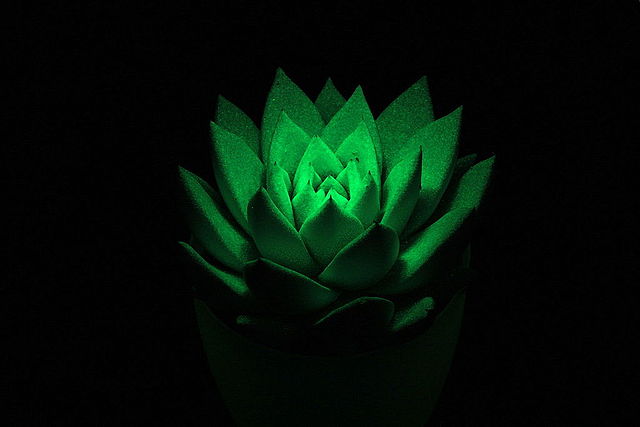
For $29 a plant, Americans can now pre-order their very own luminescent plant. This genetically engineered petunia flower plant is produced by the biotechnology firm Light Bio based in Idaho, United States, and was recently approved in February this year by the USDA as safe to purchase. The CEO of another renowned biotech company, Gingko Bioworks, praised Light Bio’s work as “leaps and bounds closer to our solar punk dream of living in Avatar’s Pandora”.
The plant is able to achieve its luminescent glow due to similarities found in mushroom bioluminescence and plant metabolism. Bioluminescent mushrooms have a molecule called ligin that provides its structure but is also paired with enzymes that convert the caffeic acid found in ligin into a luminescent molecule called luciferin. The luciferin is oxidised and converted back into caeffic acid, retaining light. The DNA of these molecules were engineered into the petunias to obtain this glowing process. The luminescence in the petunias is sustained entirely by its own metabolic energy.
The petunias are white during the day and a luminescent green in the dark
The startup’s CEO Keith Wood has been working on luminescent plants since he helped create the first glowing plant ever in 1986. The plant’s name, “Firefly Petunia” is an allusion to Wood’s involvement in discovering the bioluminescent genes in fireflies. Wood chose petunias specifically because it is a popular decoration plant and is easy to maintain. Designed to emit a soft-glowing light, the petunias are white during the day and a luminescent green in the dark. The plant’s brightness is not evenly distributed: the fastest-growing parts of the plant will emit brighter light.
From April, consumers can expect to receive and grow their luminescent plants in pots, baskets, gardens and even indoors (with extra attention). The petunias cannot be placed in cold temperatures and need a mild climate with sufficient sunlight. The plant grows an estimated 8 to 10 inches and will spud an abundance of large white flowers. All parts of the plant are not intended for consumption and consumers are recommended to keep pets away from it. In addition, the Firefly Petunia is protected under a patent and breeding is not permitted.
Americans who plan to own this one-of-a-kind plant must act timely as Light Bio is limiting its production to 50,000 plants. As for Light Bio, the company envisions a variety of bioluminescent plants types and colours: a bright future planned.


